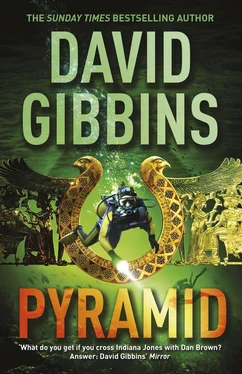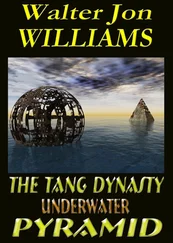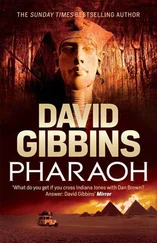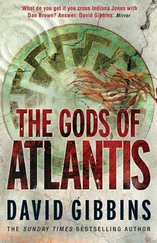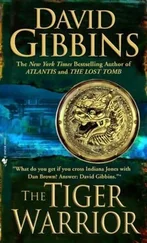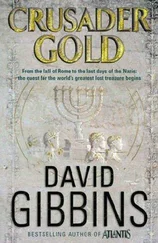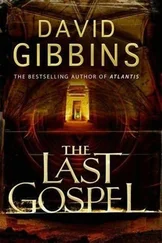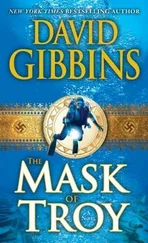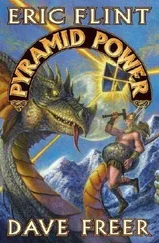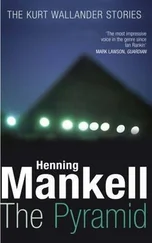* * *
The oldest known reference to Israel, and the only known reference to Israel in a second millennium BC Egyptian inscription, is on the so-called “Israel Stele” from Thebes; the two other occurrences of the hieroglyphic word in this novel are both fictional. The stele, in the Cairo Museum (JE31408), is a slab of gray granite over three meters high erected by the 19th Dynasty pharaoh Merenptah in his funerary temple in Thebes. It commemorates his conquests in the lands of Syria-Palestine toward the end of the thirteenth century BC: “Their chiefs prostrate themselves and beg for peace: Canaan is devastated, Ashkelon is vanquished, Gezer is taken, Yenoam annihilated, Israel is laid waste, its seed exists no more, Syria is made a widow for Egypt, and all lands have been pacified.” In the hieroglyphic word for Israel, the “determinative”—the first hieroglyph in the group — signifies a people rather than a place, a fascinating indication that the sense of identity as a people that was to become so much a part of Jewish history may have been evident well before the diaspora.
The development of Jerusalem in the second millennium BC remains scantily known, with many modern accounts using the Old Testament as a framework, and little being certain in the written evidence before the foundation of the “City of David” about the beginning of the first millennium BC. It seems clear, though, that Jerusalem was a substantial settlement by the time of the Egyptian New Kingdom in the late Bronze Age. Among the most fascinating of the “Amarna letters” from Akhenaten’s capital in Egypt are several from the ruler of Jerusalem confirming the loyalty of mât urusalim —the Land of Jerusalem — to the pharaoh, presumably Akhenaten himself, and from the same period comes the oldest writing from Jerusalem itself in the form of a fragmentary cuneiform tablet.
Whether or not any part of the Israelite Exodus from Egypt reached Jerusalem is a matter for speculation, but it is the type of question that taxed the many foreign archaeologists who descended on Ottoman Palestine in the nineteenth century, Bibles in hand. These included a remarkable group of British officers of the Royal Engineers who carried out the first detailed mapping of the city and its environs, working officially as well as on their own initiative. Among them are several officers who were to achieve fame in the war against the Mahdi in Sudan and feature extensively in my previous novel Pharaoh , including Charles Wilson, intelligence chief in the 1884 Gordon Relief Expedition; Charles Gordon himself, doomed defender of Khartoum; and Horatio Herbert Kitchener, whose desecration of the Mahdi’s tomb at Omdurman in 1898 satisfied his promise to avenge Gordon. But it set the stage for the resurgent extremist movement generations later that forms a present-day fictional backdrop to this novel.
Two of the books by these men, Gordon’s Reflections in Palestine, 1883 (1884), and Charles Warren’s Underground Jerusalem: An Account of Some of the Principal Difficulties Encountered in Its Exploration and the Results Obtained (1876), provide accounts of exploration beneath Jerusalem, the latter detailing extensive investigations that resulted in the discovery of a vertical hole still known as “Warren’s Shaft.” Much of the prehistoric rock cutting beneath Jerusalem is likely to have been associated with securing the water supply — opening up vertical shafts to reach the level of springs and horizontal tunnels to channel the water to convenient points beneath the city. One of the most remarkable finds detailing this type of work, now in the Istanbul archaeological museum — a legacy of Ottoman rule in Jerusalem — is a stone block from the “Siloam Tunnel” with an inscription in Palaeo-Hebrew of the early first millennium BC, the inspiration for the fictional inscription that Rebecca discovers in Chapter 17 of this novel.
Whether or not undiscovered man-made spaces exist beneath Temple Mount, perhaps including tombs and storage chambers, may become apparent only when the authorities allow further exploration, though one underground passage is known to exist to the east of “Wilson’s Arch” beside the Western Wall leading toward the temple site. Meanwhile, in the area surrounding the temple precinct, several recent excavations have been carried out that closely parallel those presented fictionally in this novel. They suggest the revelations that may await those who one day may be able to resume the explorations of Warren and his colleagues and penetrate even farther into the spaces beneath Temple Mount where access is currently forbidden.
* * *
You can read about Jack and Costas’ exciting discovery of the wreck of the Beatrice in my previous novel Pharaoh . The actual wreck site from 1837 remains undiscovered, though southeast Spain and the scenario for her wrecking presented in this novel fit the available evidence, including the likely wind patterns at that time of year for her voyage from Alexandria via Malta and probably Livorno. Since carrying out my initial research, I have unearthed more details from Lloyd’s Register and other sources about her structural changes after a refit, including the addition of iron knees, and about her armaments. The idea that these might have included guns made initially for the East India Company was inspired by the discovery in 2014 of EIC guns on a merchantman wreck in the English Channel, and by the idea that EIC weapons requisitioned by the Crown during the Napoleonic Wars before being shipped to India may have included naval ordnance that was sold off afterward when neither the Crown nor the EIC had any use for it.
* * *
The hieroglyphs that appear as a heading through this novel are taken from the Israel Stele in the Cairo Museum, mentioned above, and show the ancient Egyptian word for Israel. Of the quoted material in this novel not already attributed, the wording of the fictional inscription found under Jerusalem in Chapter 17 is based closely on the Siloam Tunnel inscription, in the Archaeological Museum, Istanbul. The Amarna Letter quoted by Rebecca in the same chapter is no. 287: 60–64. The text of the fictional papyrus document shown by Aysha in the Epilogue is inspired by a translation of passages of the Ben Sira ( Ecclesiasticus , the Book of Wisdom) by Adina Hoffman and Peter Cole in Sacred Trash: The Lost and Found World of the Cairo Geniza (2011, pp. 53–54), also the source of the pithy quote at the beginning of this note.
Since completing Pharaoh , I have discovered a fine contemporary watercolor depicting the Beatrice a few years before her loss, and you can see that, a drawing by Colonel Vyse’s draftsman Edward Andrews of the sarcophagus of Menkaure in the pyramid before he removed it, the photo of Solomon Schechter with the Geniza archive, Corporal Jones’ medals, and many other images related to the novel and the facts behind the fiction at www.davidgibbins.com and Facebook.com/DavidGibbinsAuthor.
DAVID GIBBINS has worked in underwater archaeology all his professional life. After earning a Ph.D. from Cambridge University, he taught archaeology in Britain and abroad, and is a world authority on ancient shipwrecks and sunken cities. He has led numerous expeditions to investigate underwater sites in the Mediterranean and around the world. He currently divides his time between fieldwork, England, and Canada, and is at work on a new novel about the further adventures of Jack Howard and his team in Egypt.
www.davidgibbins.com
